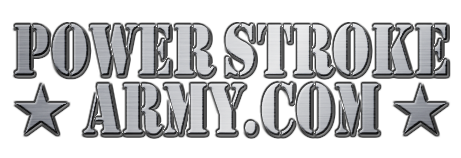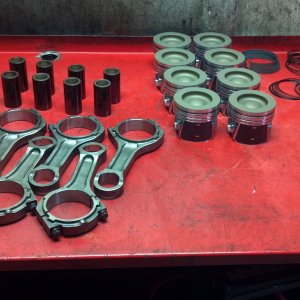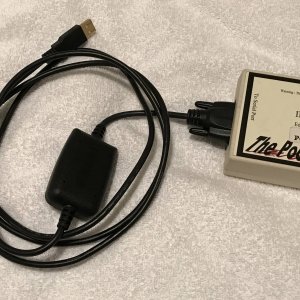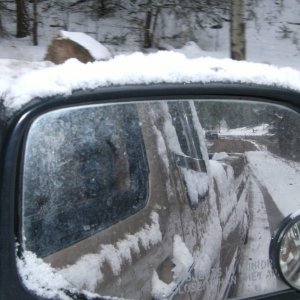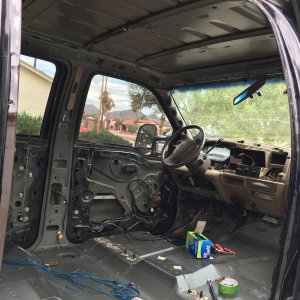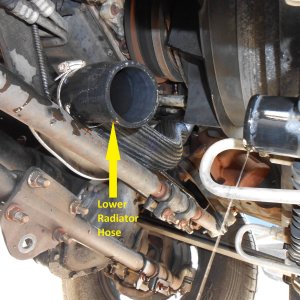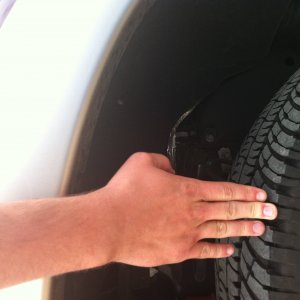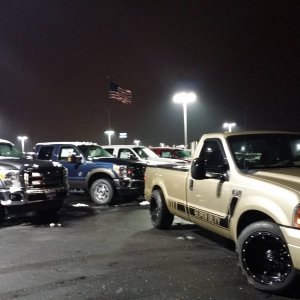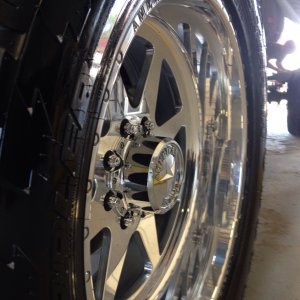jdc753
New member
I'm going to try and keep this simply but I know its going to get long and drawn out. I meant to write this up back when PSA first started but got sidetracked, but with all the questions lately I picked it up again. I hope to do another segment for installation tips/tricks and then maybe a 3rd installment for more advanced tips/tricks.
Basically I want to list off most all of the various products and manufacturers out there and try to educate people in how to best pick a product and understand why they are selecting it. I know things will change and I might be wrong on some things but hopefully this gets the basics to get people started.
First the education (boring part for most)
Ultimately you will have 3 layers to complete the acoustical treatments inside your vehicle. The first being the most common “Deadener” dampening mat, the second being a sound absorber or decoupler, and the final layer being a sound barrier.
Dampening Materials - Step 1
Now the first thing everyone thinks of is deadener, synonymous with the name brand product by Dynamat. The technical term for this product would be CLD, or Constrained Layer Damper.
What this consist of is generally a flexible layer either asphalt or butyl rubber based) bonded to a layer of aluminum foil.

When looking to select a damper the 2 key factors you want to look at are the Mass and the thickness of the foil. Essentially the higher mass means greater amount of flexible material which yields more energy dissipation (less vibrations) a thicker foil will be a stronger constraining layer, but too thick reduces the amount of flexibility for conforming to the shapes of a vehicles sheet metal. Some claim a thicker material and less coverage work, while others argue for 100% coverage sometimes 200% (double layers) coverage with a thinner cheaper damper.
Now applying the damper accomplishes half of the overall goal. The damper reduces any structural born noises (vibrations of the sheet metal.) This is usually caused from vehicle vibrations, bumps, wind/rain, speakers etc. Also the amount of panel resonance (the audible portion of the vibrations) varies depending on the panels overall stiffness. The thicker the panel, or the more bends in the panel the less chances for resonance.
Take a look at the sound you get when you’re washing your truck and you spray the bedside, or center of the door, vs the cab corner, or simply the center of the door vs the edge of the door. With the damper applied to the outer door skin (from the inside of the door) when the water hits the center of the door you will get pretty much the same result as if you were spraying the edge of the door, a nice dead sound of just the water and not a hollow echo from the door skin.
Noise Barriers - Step 2 and 3
Now to quell the rest of the road noise you need an "air barrier" that will actually filter and block out sound waves as they travel through the barrier. This is to combat the airborne noises such as exhaust, wind, tire hum, birds, small children, attack helicopters and light gun fire (as long as its not impacting your vehicle.)
This section can be broken down into 2 subsections for 2 different products. One is an actual barrier layer, MLV (mass loaded vinyl) and the other is an absorption filter layer, Closed Cell Foam. The MLV is the primary barrier component, while the closed cell foam is lesser effective across the frequency spectrum generally targeting higher frequencies, but often used together with MLV to decouple it further from your layer of damper.
Now not to add any confusion, BUT when you find yourself short of space, say on the floor for example, if is best to skip step 2 (CCF) and jump straight to the MLV, but if you have the room by all means build the layers up as thick as you can.
Closed Cell Foam – Step 2

For this filter or absorption layer what works best is a closed cell foam, it slows down the sound waves and also does not take on moisture like an open cell foam would. Again it is about energy dissipation, sound waves are a form of energy and as they travel through the closed cell foam they get slowed down and some of the sound energy gets dissipated into heat energy, think of it as putting on the brakes to the sound waves. The thicker the barrier the better as each millimeter of thickness will only slow the waves down by X amount.
Now closed cell foam is not nearly as effective at blocking sounds waves as MLV is but it is effective, mostly on higher frequency noises. Also it is very effective as a decoupler (same as the Butyl layer in the CLD) for MLV acting as a spring or cushion against any residual panel resonance.
Mass Loaded Vinyl (MLV) – Step 3

The mass loaded vinyl will act as a barrier to the sound waves, stopping them in their tracks better than any of the other products. Generally you will want an MLV that is around 1lb/ft^2 This will be your final layer between the outside work and your interior. It works along the same principals as the closed cell foam by slowing down the sound waves and converting the sound energy into heat energy.
The MLV works best when it is floated or decoupled off any surfaces but when lacking room the decoupling layer can be skipped. This way there is little to no chance of any residual resonances effecting the MLV layer.
Some worthwhile reading, http://www.sounddeadenershowdown.com/ and www.secondskinaudio.com
So there you have the basics of what materials you are looking to use. Now you don’t have to use all of them, or cover everything or spend more money than someone else, but understand what you are buying and add as budget allows, and now onto the materials available…
Materials and Manufacturer’s
CLD
Dynamat Xtreme by Dynamat – www.dynamat.com
Mass: 0.45lbs/ft^2
Overall Thickness: 1.7mm
Foil Thickness: 4mil
Price for bulk pack (36SF): $150, http://www.sonicelectronix.com/item_1726_Dynamat-Xtreme-36-Bulk-Pack-Entire-Car-10455.html
Price per square foot: $4.17 and mass per dollar per square foot – 0.108lbs/$/ft^2
Damplifier Pro by Second Skin Audio – www.secondskinaudio.com
Mass: 0.6lbs/ft^2
Overall Thickness: 2mm
Foil Thickness: 6.5mil
Price per bulk pack (36.5SF): $186
Price per square foot: $5.10 and mass per dollar per square foot – 0.118lbs/$/ft^2
RAAM BXT II by RAAMaudio – www.raamaudio.com
Mass: 0.52lbs/ft^2
Overall thickness: 1.52mm
Foil Thickness: 4mil
Price per bulk pack (37.5SF): $90
Price per square foot: $2.40 and mass per dollar per square foot – 0.217lbs/$/ft^2
B-Quiet Ultimate by B-Quiet – www.b-quiet.com
Mass: 0.35lbs/ft^2
Overall Thickness: 1.6mm
Foil Thickness: Not listed
Price per 50SF roll: $130
Price per square foot: $2.60 and mass per dollar per square foot – 0.135lbs/$/ft^2
V-Max by Cascade Audio – www.cascadeaudio.com
Mass: 0.35lbs/ft^2
Overall Thickness: 1.52mm
Foil Thickness: 4mil
Price per
Fatmat – www.fatmat.com
FatMat: 1.27mm thick, $80 for a 50SF roll ($1.60 per square foot) (rubber based)
Rattle Trap: 2.03mm thick $110 for a 50SF roll ($2.20 per square foot) (rubber based)
MegaMat: 1.78mm thick $130 for a 50SF roll ($2.60 per square foot) (Butyl based)
eDead by Elemental Designs – www.edesignaudio.com
eDead 45 (45mil thick) Butyl based: $1.00 per square foot comes as a roll
eDead 80 (80mil thick) Butyl based: $2.00 per square foot comes as a roll
Basically I want to list off most all of the various products and manufacturers out there and try to educate people in how to best pick a product and understand why they are selecting it. I know things will change and I might be wrong on some things but hopefully this gets the basics to get people started.
First the education (boring part for most)
Ultimately you will have 3 layers to complete the acoustical treatments inside your vehicle. The first being the most common “Deadener” dampening mat, the second being a sound absorber or decoupler, and the final layer being a sound barrier.
Dampening Materials - Step 1
Now the first thing everyone thinks of is deadener, synonymous with the name brand product by Dynamat. The technical term for this product would be CLD, or Constrained Layer Damper.
What this consist of is generally a flexible layer either asphalt or butyl rubber based) bonded to a layer of aluminum foil.

When looking to select a damper the 2 key factors you want to look at are the Mass and the thickness of the foil. Essentially the higher mass means greater amount of flexible material which yields more energy dissipation (less vibrations) a thicker foil will be a stronger constraining layer, but too thick reduces the amount of flexibility for conforming to the shapes of a vehicles sheet metal. Some claim a thicker material and less coverage work, while others argue for 100% coverage sometimes 200% (double layers) coverage with a thinner cheaper damper.
Now applying the damper accomplishes half of the overall goal. The damper reduces any structural born noises (vibrations of the sheet metal.) This is usually caused from vehicle vibrations, bumps, wind/rain, speakers etc. Also the amount of panel resonance (the audible portion of the vibrations) varies depending on the panels overall stiffness. The thicker the panel, or the more bends in the panel the less chances for resonance.
Take a look at the sound you get when you’re washing your truck and you spray the bedside, or center of the door, vs the cab corner, or simply the center of the door vs the edge of the door. With the damper applied to the outer door skin (from the inside of the door) when the water hits the center of the door you will get pretty much the same result as if you were spraying the edge of the door, a nice dead sound of just the water and not a hollow echo from the door skin.
Noise Barriers - Step 2 and 3
Now to quell the rest of the road noise you need an "air barrier" that will actually filter and block out sound waves as they travel through the barrier. This is to combat the airborne noises such as exhaust, wind, tire hum, birds, small children, attack helicopters and light gun fire (as long as its not impacting your vehicle.)
This section can be broken down into 2 subsections for 2 different products. One is an actual barrier layer, MLV (mass loaded vinyl) and the other is an absorption filter layer, Closed Cell Foam. The MLV is the primary barrier component, while the closed cell foam is lesser effective across the frequency spectrum generally targeting higher frequencies, but often used together with MLV to decouple it further from your layer of damper.
Now not to add any confusion, BUT when you find yourself short of space, say on the floor for example, if is best to skip step 2 (CCF) and jump straight to the MLV, but if you have the room by all means build the layers up as thick as you can.
Closed Cell Foam – Step 2
For this filter or absorption layer what works best is a closed cell foam, it slows down the sound waves and also does not take on moisture like an open cell foam would. Again it is about energy dissipation, sound waves are a form of energy and as they travel through the closed cell foam they get slowed down and some of the sound energy gets dissipated into heat energy, think of it as putting on the brakes to the sound waves. The thicker the barrier the better as each millimeter of thickness will only slow the waves down by X amount.
Now closed cell foam is not nearly as effective at blocking sounds waves as MLV is but it is effective, mostly on higher frequency noises. Also it is very effective as a decoupler (same as the Butyl layer in the CLD) for MLV acting as a spring or cushion against any residual panel resonance.
Mass Loaded Vinyl (MLV) – Step 3

The mass loaded vinyl will act as a barrier to the sound waves, stopping them in their tracks better than any of the other products. Generally you will want an MLV that is around 1lb/ft^2 This will be your final layer between the outside work and your interior. It works along the same principals as the closed cell foam by slowing down the sound waves and converting the sound energy into heat energy.
The MLV works best when it is floated or decoupled off any surfaces but when lacking room the decoupling layer can be skipped. This way there is little to no chance of any residual resonances effecting the MLV layer.
Some worthwhile reading, http://www.sounddeadenershowdown.com/ and www.secondskinaudio.com
So there you have the basics of what materials you are looking to use. Now you don’t have to use all of them, or cover everything or spend more money than someone else, but understand what you are buying and add as budget allows, and now onto the materials available…
Materials and Manufacturer’s
CLD
Dynamat Xtreme by Dynamat – www.dynamat.com
Mass: 0.45lbs/ft^2
Overall Thickness: 1.7mm
Foil Thickness: 4mil
Price for bulk pack (36SF): $150, http://www.sonicelectronix.com/item_1726_Dynamat-Xtreme-36-Bulk-Pack-Entire-Car-10455.html
Price per square foot: $4.17 and mass per dollar per square foot – 0.108lbs/$/ft^2
Damplifier Pro by Second Skin Audio – www.secondskinaudio.com
Mass: 0.6lbs/ft^2
Overall Thickness: 2mm
Foil Thickness: 6.5mil
Price per bulk pack (36.5SF): $186
Price per square foot: $5.10 and mass per dollar per square foot – 0.118lbs/$/ft^2
RAAM BXT II by RAAMaudio – www.raamaudio.com
Mass: 0.52lbs/ft^2
Overall thickness: 1.52mm
Foil Thickness: 4mil
Price per bulk pack (37.5SF): $90
Price per square foot: $2.40 and mass per dollar per square foot – 0.217lbs/$/ft^2
B-Quiet Ultimate by B-Quiet – www.b-quiet.com
Mass: 0.35lbs/ft^2
Overall Thickness: 1.6mm
Foil Thickness: Not listed
Price per 50SF roll: $130
Price per square foot: $2.60 and mass per dollar per square foot – 0.135lbs/$/ft^2
V-Max by Cascade Audio – www.cascadeaudio.com
Mass: 0.35lbs/ft^2
Overall Thickness: 1.52mm
Foil Thickness: 4mil
Price per
Fatmat – www.fatmat.com
FatMat: 1.27mm thick, $80 for a 50SF roll ($1.60 per square foot) (rubber based)
Rattle Trap: 2.03mm thick $110 for a 50SF roll ($2.20 per square foot) (rubber based)
MegaMat: 1.78mm thick $130 for a 50SF roll ($2.60 per square foot) (Butyl based)
eDead by Elemental Designs – www.edesignaudio.com
eDead 45 (45mil thick) Butyl based: $1.00 per square foot comes as a roll
eDead 80 (80mil thick) Butyl based: $2.00 per square foot comes as a roll
Last edited:
